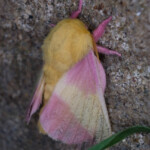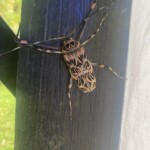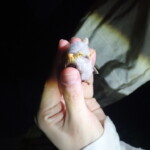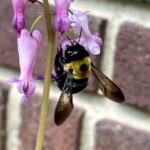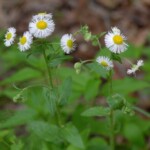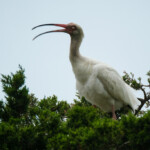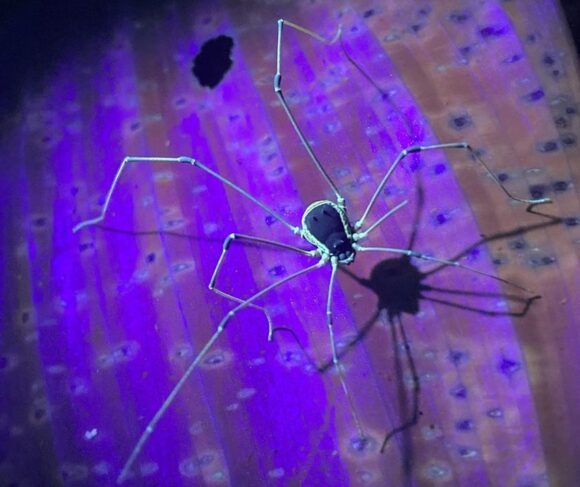
Cynorta marginalis observed by undergraduate Madelyn Bigelow-Bailey.
The Personal Bioblitz was launched in 2014 by Lena Struwe, director of the Chrysler Herbarium and professor of botany in the Department of Ecology, Evolution and Natural Resources, challenging participants to observe and report as many wild species as possible from everyday life using the global community science website and free app, iNaturalist.
It was another record-breaking year for the Personal Bioblitz project, with over 10,000 species observed in 2.5 months and more participants than ever before.
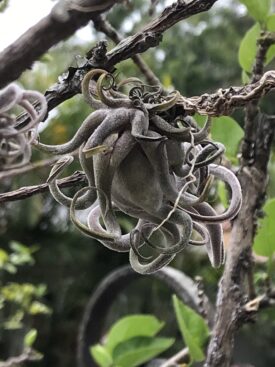
Medusa’s Head Tillandsia (caput-medusae) observed by Lena Struwe
Cumulative Results for the 2023 Project
Total observations: 64448 (We didn’t beat last year’s record of 70461, but we were close)
Total species: 10434 (We broke the all-time record with over 1000 species!)
Observers: 142 (New record; more and more people are joining in)
Who had the Most Observations?
- Sara Rall (@srall) from New Jersey, 8324 observations (she did it AGAIN, third time as top observer! Sara is also the 2nd top iNaturalist observer in the world.)
- Susan Hewitt (@susanhewitt) from New York, 4787 observations (invertebrate specialist, was in 4th place last year, and the 6th top observer in the world.)
- Barbara L Wilson (@sedgequeen) from Oregon, 4286 observations (just a single observation below Susan Hewitt; Barbara came in third place last year too.)
- Jeff Mollenhauer (@jmole) from New Jersey, 3287 observations (a newcomer in our bioblitz, participating for the first time.)
- Nick Kleinschmidt (@nick2524) from New Hampshire, 3182 observations.
Who observed the Most Species?
- Jeff Mollenhauer (@jmole) from New Jersey, 1448 species (new participant, congratulations!)
- Sarah Kelsey (@botanylicious) from Georgia, 1357 species (was in 5th place last year, new personal record!)
- Annika Lindqvist (@annikaml) from Texas, 1272 species (despite seeing more species than last year when she won the top spot, that was not enough this year.)
- Nick Lambert from Australia, 1037 species (winner of our bioblitz 2021)
- Bonnie Semmling (@mertensia) from New Jersey, USA, 1017 species (new personal bioblitz record.)
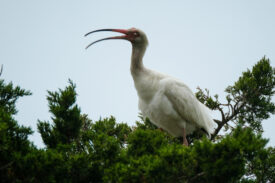
White Ibis (Eudocimus albus) observed by Mirko Schoenitz.
Which groups were reported the most?
- Plants: 57% of observations; 47% of species, (yes, they are large and sit still!)
- Insects: 17% of observations; 4% of species.
- Birds: 8% of observations; 6% of species.
- Fungi: 7% of observations; 7% of species.
- Molluscs: 2% of observations; 4% of species.
- Spiders: 2% of observations; 2% of species.
- Everything else had 1% or less of observations and species seen (mammals, amphibians, reptiles, fish, protozoa, and ‘life’, which includes bacteria and viruses.)
Most Frequently Observed Species (plants win!)
- Eastern White Pine (Pinus strobus), 439 observations.
- American Beech (Fagus grandifolia), 323 observations (was in 1st place last year.)
- Common Blue Violet (Viola sororia), 519 observations.
- Eastern Hemlock (Tsuga canadensis), 269 observations.
- Garlic Mustard (Alliaria petiolata), 236 observations.
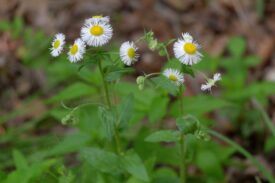
Philadelphia Fleabane Erigeron philadelphicus) observed by Bonnie Semmling
Cook Alumni and Retired Staff Join in for 2023
This year 142 alumni and staff joined in on the fun, participating in their own competition, the Rutgers Bioblitz. Sarah Kelsey is the winner of the alumni competition, with Bonnie Semmling as the runner-up.
- Sarah Kelsey (@botanylicious) undergraduate alumna, (SEBS’08) Plant Science, 2712 observations, 1489 species.
- Bonnie Semmling (@Mertensia) undergraduate alumna, (SEBS’22) EPIB, 2460 observations, 1148 species.
- Herve Barrier (@hb2000) retired staff, 1134 observations, 433 species.
- Natalie Howe (@Nataliemhowe) graduate student, (GSNB’16), Ecology and Evolution, 234 observations, 209 species.
- Allana Pomponio (@dendrol) undergraduate alumna, (SEBS’22) Ecology, Evolution, and Natural Resources, 179 observations, 114 species.
- Gregory Flanagan (@g_c_f) undergraduate alumnus, (CC’97) Natural Resource Management, 12 observations, 12 species.
Some Fun Facts
- Plants win again as the most observed taxonomic group, accounting for 57% of all observations (down from 62% last year) and 47% of all species. Plants are generally large, don’t fly, crawl, or run, so they are easier to see and photograph than other groups.
- Only 29% of observations were from New Jersey, the home location of the Personal Bioblitz (up from last year’s 26%.) 2906 species were reported from New Jersey.
- 3,328 different people helped identify the species in this project. Thank you all! (Special call out to @sadawolk who identified thousands of observations.)
- Of all observations 15% were introduced to the area where they were seen. This was also 10% of the species that were reported.
- Over 52% of observations and 65% of species reported reached Research Grade quality on iNaturalist. These observations get added to the Global Biodiversity Information Facility (GBIF) database automatically and are used for research globally.
- One of the winners of the iNaturalist project for the Rutgers Costa Rica Spring break courses–see the iNaturalist project page–also participated in the Personal Bioblitz – undergraduate Madelyn Bigelow-Bailey @wormgrill. (Look at the giant harlequin beetle she saw in Costa Rica, one of the largest beetles when it comes to leg size. She also observed harvestman spider UV light at night, very cool!)
Resources and connections
For a list of the most observed New Jersey species, see the iNaturalist website. NOTE: the numbers of species on the iNaturalist home page of the project will change because more species will be identified as time passes. The numbers here are the official numbers for 2022.
See this year’s project page on iNaturalist. Contact e-mail: Lena.Struwe@rutgers.edu
Sign up for the mailing list and join the Facebook Group. Visit the iNaturalist project page.
See you again in 2024!




